Greenhab Report – February 3rd
Prepared by: Julia DeMarines
03/02/2018
Environmental control: Heating
Ambient with door opening: Shade cloth on
Working hours in Green Hab: 13:00 – 15:00, 19:00 – 20:00
Outside temp at working hour: -1ºC
Inside temp at working hour: 15ºC,
Inside temp H: 31ºC,
Inside temp L: 15ºC,
Inside humidity: 47 %
Inside humidity H: 47%
Inside humidity L: 16%
Hours of supplemental light: 06:00 – 09:59
Changes to the crops: N/A
Daily water usage for crops: 2 gallons midday; 10 gallons evening
Time(s) of watering plants: 13:00 – 15:00 (2 gallons), 19:00 – 20:00 (10 gallons)
Changes to research plants: N/A
Narrative: Both Julia and Zac were on EVA’s today at separate times and both spent time watering the plants, staggered. Upon persistent trials and errors, we have both noticed that the wilted plants are most likely due to requiring a midday watering, being dry from having the door open, and being in the southwestern-most corner (and getting very hot).
We will keep monitoring and testing out better methods to keep the temperature not too hot and not too cold. Today was a very windy day.
Future needs and questions: We need tomato cages before repotting as to not disturb them any more than necessary.
Summary of NASA VEGGIE OASYS: Renee added water to the wicks and the reservoir and took photos of germinating seeds for the PI.
[end]
Journalist Report – February 3rd
Simulation: Imitation of a situation or process for research and training
SOL-6 Author’s name: Dr. Sarah Jane Pell
The theme of this report is Simulation. It is the second report in a short series responding to the MDRS “Safety, Simulation, and Science” priority of operations.
BACKGROUND:
First and foremost, the MDRS analogue attempts to curate a research station model supporting the professional relationship and activities of early settlers.
The simulation, by its nature, combines real working facilities on Earth Mars-like terrain, with instruments and systems for the imitation of a Mars-like situation and various associated process for research and training. There are collective and individual jobs to get done in developing and maintaining the station. Crews define an assigned role and a job position for each member with a myriad of tasks to perform, and conditions to explore.
Ultimately, the MDRS simulation offers an experience for contributing to a body of situational or process-based knowledge unraveling the intricate inner working of establishing a human foothold on Mars.
The simulation evokes many responses. There are moments when we feel like visitors, tourists, customers, test-subjects, staff, scouts, students, researchers, settlers, crewmembers, trainees, simulants and occasionally, frontier explorers.
SIMULATION:
Today, two teams of three Analogue Astronauts simulated “spacewalks” or extravehicular activities [EVAs] across the MDRS Mars-analogue terrain. We designated EVA-7 as an opportunity to implement formal briefing procedures and techniques derived from related analogue EVA SIM procedures (underwater). [See MDRS Crew 188 EVA Coordinator Briefing and De-brief Protocols below. We welcome any suggestions or feedback, and include here for future crews to reference, noting donning and doffing checklists would also be helpful for MDRS EVA Operations].
The EVA-7 profile supported a three-hour spacewalk by three astronauts on the MDRS analogue site to troubleshoot a navigation issue, perform a bubble experiment along the ridge overlooking the habitat, and capture activities in 6K 360 3D Video in-situ. [See EVA reports]
The ways the simulation maintained “high-fidelity” included: instances of loss of direction or radio communication, high winds, unchartered pathways such as climbing up the cliff face, the variety of surface conditions over the 1000 feet elevation, the incredibly rich red and amber marmalade geology, the exertion activities themselves, team-work, sense of adventure and the shared mission.
Ways that the simulation was “broken” included: picking up commercial rubbish in the ravines, watching an SUV drive by along Cow Dung Road, encountering plant biodiversity on the open plains, noticing animal tracks along the ridges, looking out for rattlesnakes and cougars, and using a digital phone as an instrument for checking time.
But, these are the surface conditions: let’s dig a little deeper into the experience. It is not just space, rather the spatiality of the embodied experience, and how we react and feel that determines our relationship to the simulation.
We are “in simulation” when we feel that we need to be ultimately resourceful in charting our own experience. In other words, the conditions need to support our navigation through an experience, with autonomy and agency. Zak Trolley describes many instances where we must suspend our beliefs and open ourselves to the imagined, and this is made easier by proximity to the Mars-like landscape. For example, looking up through the red hills towards the ridge summit, it is easy to see yourself following the Curiosity Rover pathways.
However once reaching the road at the top of the ridge, you have to work so much harder to imagine belonging to an outpost on Mars. On an EVA, Dr. Ryan Kobrick reports the feeling of being constrained to the limitations and requirements of wearing the life-support systems, relying on navigational and time-stamped operations and waypoints, and undertaking pre-authorised research tasks also strengthens the social and collective simulation.
These types of elements draw us closer to the inner experience of the simulation: conscious of the shift in space and spatiality of your own body in time, and perspective. It is a delicate dance between suspending aspects of reality and illusionism, fact and fiction, the serious and the phantasmagorical.
As this the second most important aspect of the MDRS experience, we are embracing and discussing ways to support each other in the enhancement and fidelity of the simulation experience, through playing out the socially coded nature of our roles and curating the themes of our own perspectives.
We recommend that future crews consider an EVA to the top of the ridge to look back over the MDRS station. From that vantage, you can fully appreciate the isolation and beauty of the Mars-analogue site, you can film and be filmed, and the perspective helps frame where you are, and why you would come here.
MDRS Crew 188 EVA Coordinator Briefing Protocols
The EVA Coordinator for each EVA SIM is responsible for conducting a pre-EVA briefing in the presence of the entire EVA team (including Astronauts (EV.1. EV.2. EV.3…,) CapCom, Safety/Medical Officer, Astronaut Attendants and any Technical Specialists). Each team member has a responsibility to give their full attention during the briefing, as in the event of an incident any team member may be required to initiate and/or control emergency procedures.
The content of this briefing must include at least the following information, and must be modified to take account of any other details specific to the particular extra vehicular simulation operation being considered:
1. Identification of the EVA Coordinator (they would normally be the person giving the briefing) and EVA Commander/s for the EVA/s (may or may not be the EVA Coordinator);
2. Nomination of Roles Analogue Astronauts, Standby Astronauts and Astronaut Attendants for the EVA, where applicable
3. Details of life-support equipment to be used during the EVA/s, including any habitats, vehicles, or mobile SSBA (LP compressor or bottle bank), SCUBA, CLLSP pack, oxygen equipment, and First Aid/safety
4. List equipment and any other specific items needed; including vehicles, personal protective equipment, payload instrumentation, tools, guidance and navigation material, timepiece, safety or research equipment
5. Allocation and description of tasks of each EVA team member, outlining all procedures for the extravehicular activity simulation;
6. Full details of the EVA plan, specifically including mission objectives, location, duration, tasks, risk, hazards, mitigation strategies, EVA termination procedures, ‘in SIM’ emergency procedures, safety checks, and communication procedures;
7. Confirmation with Attendant/s and Standby Astronauts/s of their duties, including keeping visual contact with Analogue Astronaut/s or their communications and knowledge of protocols for recovery of injured Astronauts from the analogue environment, rescue procedures, and out of SIM emergency/evacuation procedures;
8. A briefing of each individual regarding their specific tasks, and for analogue astronauts, a check on their fitness to perform the EVA (i.e. asking about tiredness, or any colds, flu’s or injuries they may have, and overall willingness and wellbeing);
9. Details of expected ‘in SIM’ conditions, including weather and terrain conditions, visibility, temperature, range of radio communications, exposure/isolation etc. (NB. these must be confirmed once at the analogue site);
10. Recall signals and protocols;
11. EVA termination points e.g. low air/minimum air limits, technical equipment failure, change of conditions, time in SIM, loss of visibility, fatigue, cold, oxygen toxicity limits, etc.
12. Answers to any queries.
As well as the above, once at the analogue site, the EVA Coordinator must perform the following tasks:
1. Re-evaluate the site, conditions, team, tasks and consequent duration of the EVA;
2. Reconfirm all Analogue Astronaut’s and Standby Astronaut’s health, air supply, equipment etc.;
3. Ensure all required information is recorded on the ‘EVA Record’ Form (may be delegated to CapCom);
4. Conduct a final evaluation of all Analogue Astronaut’s equipment and dress.
MDRS Crew 188 EVA Coordinator De-Briefing Protocols
After every EVA, the EVA Coordinator must conduct a post-EVA debrief with all EVA personnel on the simulation including the following:
1. Checking the health of all simulation astronauts, and recording details of any issues or incidents encountered, including discussing whether risk assessment controls were effective;
2. Noting all tasks achieved and any irregularities described by the astronaut/s;
3. Recording equipment problems encountered, and ensuring the equipment is tagged OUT OF SERVICE;
4. Notifying each astronaut of their EVA details as recorded;
5. Notifying each astronaut of their repetitive group designator, and the time they left the air-lock and the EVA;
6. Detailing any post EVA restrictions to each astronaut, including altitude, heavy work, exercise or showering restrictions, and ensure the astronaut understand these.
As well, the EVA Coordinator should coordinate with the Safety/Medical Officer:
7. Check each astronaut’s health 1, 6, 24 & 48 hours after the EVA (where practicable);
8. Ensure they and the EVA Leader (if other than EVA Coordinator), sign the EVA Record Form/s for the day.
9. Prepare the EVA Report for Mission Control
EVA Report – February 3rd
EVA #7
Author’s name: Tatsunari Tomiyama AHFP, Health & Safety Officer
Number of EVA crew: 3
Participants: Sarah Jane Pell, Zac Trolley, and Tatsunari Tomiyama
EVA Commander: Sarah Jane Pell
Purpose of EVA: To get dirty and gather data for the dust study. (Primary Objective) To scout the rim for future EVA missions and observe the area from a high vantage point. (Secondary Objective)
Location of EVA: Hab Ridge, Skyline Rim
UDM27 Coordinates: 5175750E 54250500N
Rovers used: None
Duration: 2 hours 11minutes
EVA Departure Time: 13:30
EVA Return Time: 16:19
Summary:
There were two objectives for this EVA. Primary objective was to collect data for dust study for NASA and secondary objective was to make more waypoints for future EVA studies. Both objectives were successfully completed.
We had difficulty to find 11:03 road on the way to get Skyline Rim. However, we climbed slopes to get the road while carefully monitoring each other. While climbing, residence-in-artist, Sarah Jane Pell, filmed our activity using bubble.
I am assuming this report will be in journalist report today. After arrived on the Hab Ridge Road, we walked to the South Hab viewpoint and found some animal footprints.
After HABCOM confirmed that we arrived at the objective points and took some photos, we returned to the Hab Ridge Road. We tried to search for the original pathway which is 11:03 and we could found the road.
Then we safely returned.
On the way back to the Hab, we collected some garbage on the past river prints and saw an unknown vehicle as mentioned in the report before.
Dust data collection was performed when we returned to the Hab.
EVA Report – February 3rd
EVA #6
Author’s name: Renee Garifi, Executive Officer
Number of EVA Crew: 3
Participants: Ryan Kobrick, Renee Garifi, Julia De Marines
EVA Commander: Renee Garifi
Location: Lith Canyon and Goblins
UDM27 Coordinates: 519500E, 4256500N
Rovers used: Deimos and Curiosity
Duration: 3 hours, 11 minutes
EVA Departure Time: 10:18
EVA Return Time: 13:29
Summary:
We drove north on Cow Dung Road to Lith Canyon where we collected hilltop soil samples for the astrobiological micrometeorite investigation and hunted the lower areas for chlorophyll samples to collect. Along the way, we mapped our route using Garmin GPS waypoint drops for archive and analysis of sample collection spots. Both objectives were successfully completed. The final waypoint took the crew to the Goblins site to investigate the area for potential future sampling and video.
We left the airlock at 10:18 and departed for our driving route with Renee and Ryan riding in the Deimos rover and Julia following in Curiosity. At 10:33, we passed Cowboy’s Corner and reached the out-of-range point for the long-range radios. Once in the target area of Lith Canyon, we parked the rovers and proceeded by foot to the Goblins site.
We took photos and videos and collected some scientific samples of rock, soil and small green leaves and rocks for chlorophyll analysis. We also shot some photos and videos for our documentary and enjoyed the breathtaking view from the higher points.
We worked as a team to carefully navigate the rough terrain and slowed our pace when the team was showing signs of fatigue. We opted to skip the Marble Ceremony stop on the way back to the Hab in order to save time and departed Lith Canyon to return to the Hab.
We checked back in with HABCOM at 13:04 when we were back in radio range. We completed the EVA at 13:29.
EVA was a success.
Sol Summary – February 3rd
Sol 6
Summary Title: A Blustery Day on Mars
Author’s name: Ryan L. Kobrick, Ph.D., MDRS Crew 188 Commander
Mission Status: Everything is fine, how are you?
Sol Activity Summary:
A two-EVA day today kept the crew busy all day. The morning EVA (Renee, Julia, and I) went North to discover the "Goblins" in Lith Canyon. The crew followed an ancient stream bed into the canyon, a familiar site for myself once we reached a few of the more memorable dips, with a grand opening from rolling red cliffs to an open field followed by a deep canyon drop area near what we hope to confirm was the correct location.
The afternoon EVA (Zac, Tat, and SJ) can be summarized by two words, windy bubbles. EVA double-oh-seven ventured by foot North and scrambled up the red cliffs near Sagan Road to reach the Hab Ridge Road. Performing a variety of bubbles experiments, the crew experience upper wind limits for their expedition. They walked south towards the Hab for a scenic view of our campus from above.
Meanwhile back in the Hab, I was in full science mode taking dust measurements in the airlock and uploading biometric data to Earth. The winds are expected to keep the Hab cool overnight leading into Super Science Sunday… I mean Super Bowl Sunday. The crew is planning to coordinate outreach activities to see if we can help raise awareness for human spaceflight and Mars-forward research.
Spacesuit Up!
Ryan L. Kobrick, Ph.D.
MDRS Crew 188 Commander
Look Ahead Plan:
EVA 8 is being planned to take the crew back up on the Hab Ridge for sample collection and scenic views. The ERAU spacesuit mobility study is being planned for video capture in the science dome. IN the afternoon we will have our next installment of the human factors study. During the day the team will be trying to post awesome social media content for #SuperScienceSunday.
Have a better hashtag?
Let us know on Facebook: https://www.facebook.com/TeamISUonMars and Twitter: https://twitter.com/ISUonMars.
Anomalies in work:
Robotic observatory currently not functional. MDRS Astronomy lead working problem.
Weather:
A very windy day. Skies were mostly clear.
Crew Physical Status:
The crew is in the groove zone.
EVA:
One is planned for tomorrow.
Reports to file:
1. EVA #8 request
2. EVA #6 and #7 Report
3. Ops Report
4. Sol Summary
5. Journalist Report
6. Green Hab Report
7. Daily Photos
Support Requested:
Heater for science dome requested.
There are potentially two packages at Hollow Mountain that we would love to have picked up.
Water tank refills will be needed in the next few days.


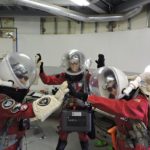
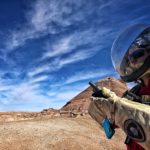

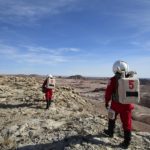
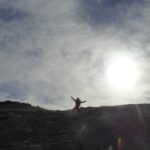
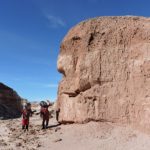
You must be logged in to post a comment.